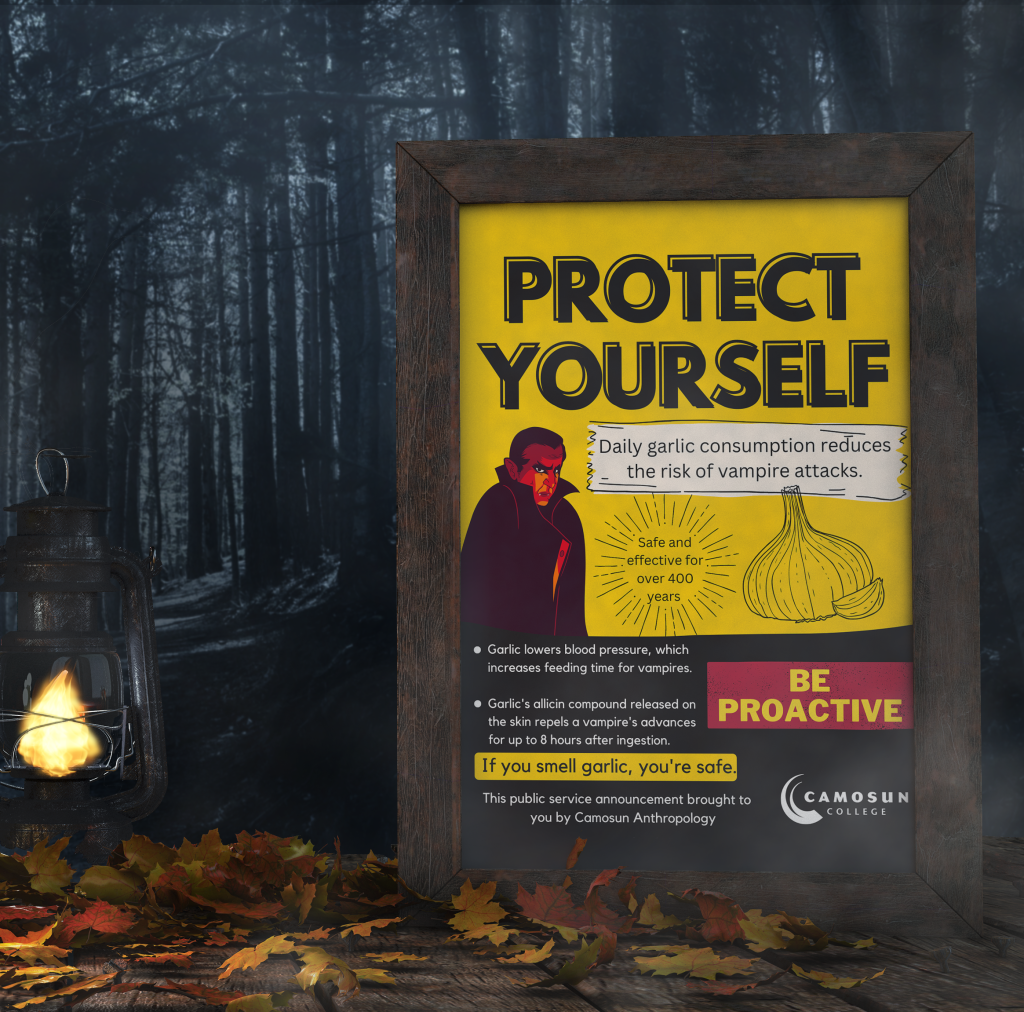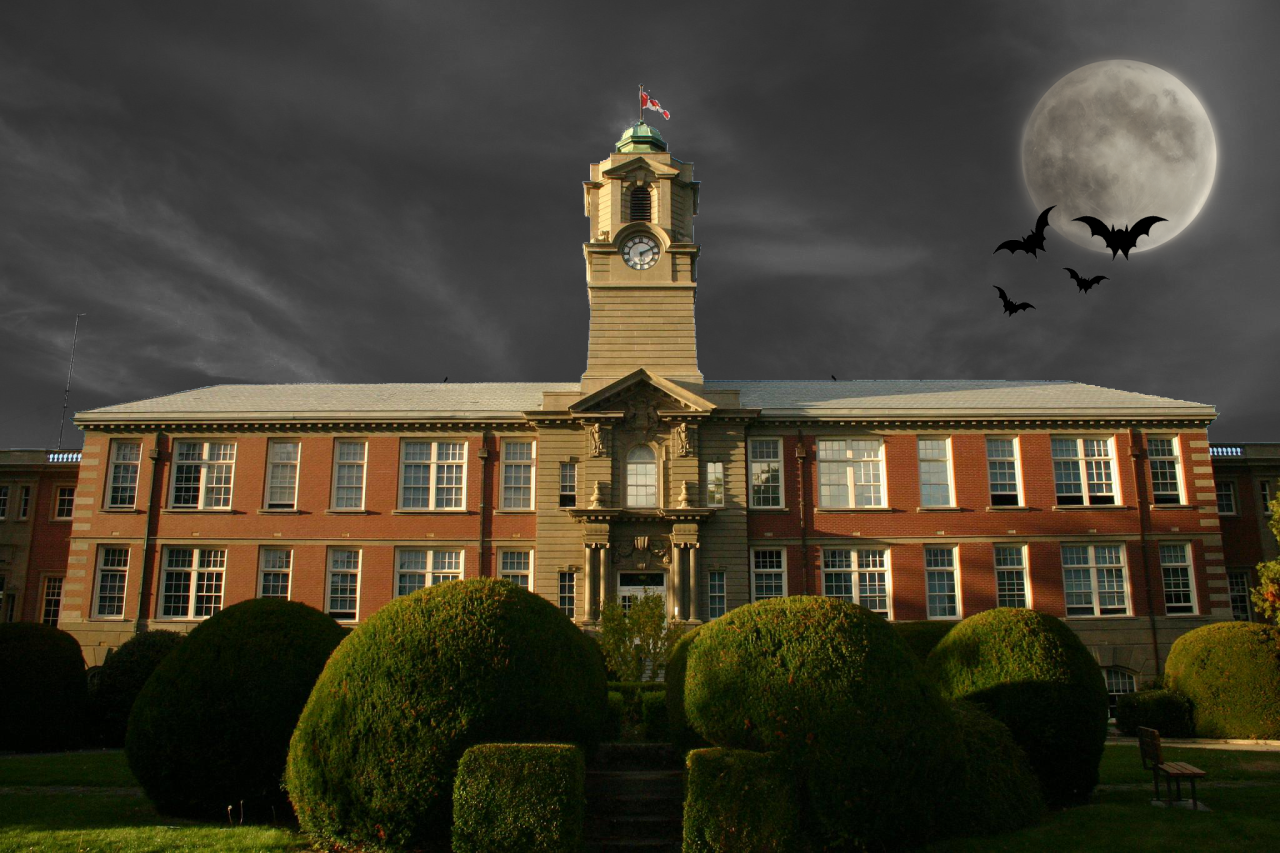Standing in the hallway of Camosun College’s historic and supposedly haunted Young building, Nicole Kilburn and Dr. Katie Waterhouse pull a black satin sheet over the base of a glass display cabinet, creating a resting space for a special guest.

Kilburn urges the campus community to stay safe this year, touting the scientific and historic benefits of garlic to deter unruly vampires.
The future resident? Kilburn’s personal hand-articulated practice skeleton, who might just be a vampire.
Life size and yellowing, Mr. Skeleton will lie entombed in his glass casket as a way to highlight some of the historical origins of the most notorious kind of nocturnal monster. From the reasons why vampires have long teeth, to archeological records of heart-piercing stakes, Kilburn and Waterhouse cover all the gruesomely true details in their most recent video.
No bones about it, it’s a creepy display, but one that the two instructors hope helps spark an interest in anthropology this Halloween.
“History suggest that instances of vampires increase during times of increased instability. Given the tumultuous past few years, it’s no secret that the risk is higher,” says Program Leader and Anthropology Instructor Kilburn, who has worked on other videos on the historical origins of Halloween favourites, like Jack o’ Lanterns, cats and witches.
"History suggest that instances of vampires increase during times of increased instability. Given the tumultuous past few years, it’s no secret that the risk is higher,”
- Nicole Kilburn, Camosun Program Leader and Anthropology Instructor
“However, research supports daily garlic consumption as practical public health intervention,” she advises. “Bioactive compounds in garlic are linked to hypotensive effects. According to medical researchers in Australia, this reduction in blood pressure would increase vampire feeding time, increasing the risk of discovery and being staked. Over time. This would offer a selective advantage favoring vampires feeding on non-garlicky victims.”
Forensic Anthropology instructor Dr. Katie Waterhouse offers another scientific explanation, this time for why the white faced, long toothed ghouls of lore appear the way they do.
“Forensic Anthropology can really help us understand what happens to bodies after death. After a number of plagues ravaged Europe during the sixteenth and seventeenth century, there were so many dead bodies to be buried that graves had to be reopened sooner than they normally would,” says Waterhouse. “Living people started to see what really happened to bodies after death, which may lead to some of the imagery that we see associated with vampires.”
The one fact that should help if you start to feel yourself go pale with fright? Kilburn says that most people in Victoria choose to get cremated, so it’s likely that we don’t have too many local vampires.
Contact information
Katie McGroarty
Marketing/ Communications StrategistCamosun College

